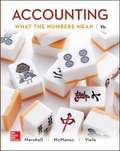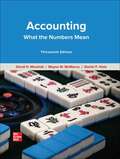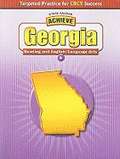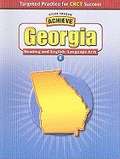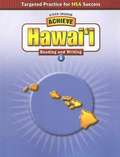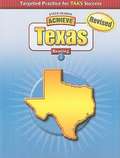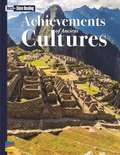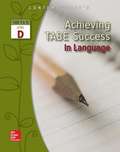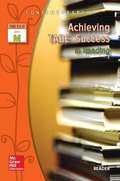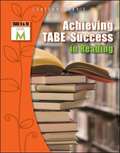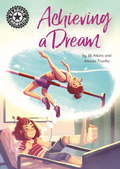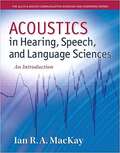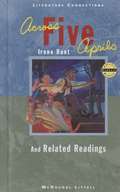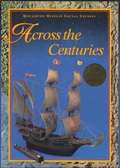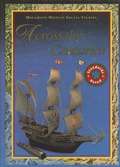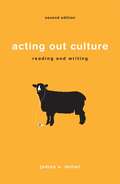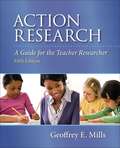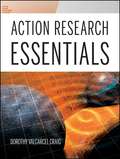- Table View
- List View
Accounting: What the Numbers Mean
by David H. Marshall Wayne William McManus Daniel F. VieleAccounting has become known as the language of business. This new edition is written to meet the needs of those students who will not be accountants but who do need to understand accounting to learn the key language that embarks us in the business world. Marshall, the leading text in the Survey market, takes readers through the basics: what accounting information is, what it means, and how it is used. The authors help students succeed through clear and concise writing, a conceptual focus and unparalleled technology support. In using this text, students examine financial statements and discover what they do and do not communicate. This enables them to gain the crucial decision-making and problem-solving skills they need in order to succeed in a professional environment.
Accounting: What the Numbers Mean
by David H. Marshall Daniel F. Viele Wayne W. McManusDesigned for non-majors, Accounting: What the Numbers Mean, guides students through the basics: what accounting information is, how it is developed, how it is used, and what it means. Financial statements are examined to learn what they do and do not communicate, enhancing the student’s decision-making and problem-solving abilities from a user perspective. This approach benefits a variety of non-accounting majors, including students focusing on other areas of business or nonbusiness programs such as engineering, behavioral sciences, public administration, or prelaw.
Acharya Bhagwat Sankalit Wangmay Khand 1: आचार्य भागवत संकलित वाङ्मय खंड १
by Achyut Keshav Bhagwatगांधीयुगात महाराष्ट्रात आचार्य जावडेकरांसारखे जे निष्ठावंत बुद्धिमंत निर्माण झाले त्यांतीलच आचार्य भागवत हे एक. त्यांनी केवळ सत्याग्रहाच्या तत्त्वज्ञानाचाच महाराष्ट्रात प्रचार केला नाही तर समाजवादाची मूलभूत तत्त्वेही जनसामान्यांपर्यंत पोचविली आणि महाराष्ट्राचे सर्वतोपरी प्रबोधन केले, एक संपूर्णपणे नवी पिढी घडविली. आचार्य भागवत हे विचारवंत तर होतेच, त्याचबरोबर ते उत्कृष्ट वक्तेही होते. अशा थोर व्यक्तीचे वाङ्मय दोन खंडांत संकलित करून प्रसिद्ध करण्याचे साहित्य संस्कृती मंडळाने ठरविले. प्रस्तुत ग्रथ हा त्यांतील प्रथम खंड होय. या पहिल्या खंडात अनेक विषयांवरील लेख आहेत. इस्लामची शिकवण, अध्यात्म आणि विज्ञान, स्त्रीचे समाजातील स्थान, ध्येयवादाचे विवेचन, समाजधारणेची नवी मूल्ये हे त्यांपैकी काही. मानवनिष्ठा व मानवप्रेम हे तर्ककर्कश आचार्यांच्या विचारांमागील मुख्यसूत्र. त्यातून त्यांच्या साऱ्या विचारांचे नवनीत विकसित होते.
Achieve Georgia: Reading and English/Language Arts, Grade 6
by Harcourt AchieveThis book will help you prepare for a test based on the Criterion-Referenced Competency Test (CRCT) in Reading and English/Language Arts. The first part of the book, Modeled Instruction, will give you practice with the different kinds of questions you will see on the real test. The Modeled Instruction will also give you tips for answering each question.
Achieve Georgia: Reading and English/Language Arts, Grade 8
by Harcourt AchieveAchieve Georgia will help you get ready for a test based on the standards set up by the state of Georgia. Standards are goals that have been developed to make sure that you have all the skills necessary to be successful in school.
Achieve Hawai'i: Language Arts, Grade 8
by Harcourt AchieveThis book contains Test, Practice and Self Assessment, to help students prepare for a test based on the Hawai'i Reading and Writing Standards.
Achieve Texas: Reading and Writing, Grade 3
by Harcourt AchieveThis book will help you prepare for the Grade 3 TAKS Reading test and the Grade 4 TAKS Writing test. The first part of the book lets you practice the different kinds of questions you will see on the real tests. It also gives you a tip for answering each question.
Achieving TABE Success In Language: Level D
by Linda Kwil Genevieve Kelley Sean Klumder Vickie TrippTo the Learner: If you have had problems expressing your ideas, particularly in writing, Contemporary's Achieving TABE® Success in Language will help. The workbook will explain basic grammar and composition skills and let you practice those skills in focused exercises. Achieving TABE® Success in Language will increase your confidence in your ability to communicate both orally and in writing. Achieving TABE® Success in Language will help you develop specific language skills, especially writing skills. The workbook is self-contained with the Answer Key at the back of the book. Clear directions will guide you through the lessons and exercises.
Achieving TABE® Success In Reading Level M
by McGraw-Hill Education StaffGeared toward the Test for Adult Basic Education (TABE). Provides complete skill preparation and practice for TABE 9 &10, encompassing Reading, Mathematics and Language for level M.
Achieving TABE® Success in Reading Level M [Grade 9-12]
by Linda Kwil Sean Klunder Genevieve KelleyTheAchieving TABE Successfamily is designed to provide complete skill preparation and practice for TABE 9&10, encompassing Reading, Mathematics and Language, for levels E, M, D and A. This series of books will help students achieve NRA gain through targeted instruction that specifically addresses TABE 9&10 skills. Achieving TABE Success . . . workbookscontain the following features: TABE 9&10 Correlation Charts Each text contains a TABE 9&10 Correlation Chart that links each question to targeted skill lessons, enabling instructors and students to build a personalized study plan based on skill level strengths and weaknesses. Pre-tests and Post-tests Each workbook begins with a pre-test and a skills correlation chart to help diagnose strengths and weaknesses and determine TABE readiness. The format of each pre- and post-test matches that of the actual TABE test. Targeted TABE Skill Lessons Each lesson specifically targets a TABE skill. Students work with the innovative lesson format that provides step-by-step instruction to help insure success. The Mathematics lessons offer plenty of instruction and practice to help master each TABE skill. In the Reading and Language workbooks, the lessons are divided into four parts for a graduated approach to learning: Introduceclearly defines, explains, and illustrates the skill, and includes examples. Practicepresents work related to the skill just introduced. Applyreinforces the skill through activities and exercises. Check Upevaluates student comprehension. Unit Reviews and Math Glossary Unit reviews are divided into two parts: Review, which summarizes unit content, and Assessment, to determine student understanding. Mathematics texts contain a Glossary of Common Terms to help students with the language of math. Achieving TABE Success in Reading . . . Readersare coordinated with their respective Reading workbooks, to strengthen skills by applying examples and questions that are pertinent to the skill covered in the workbook. Text/TABE Level Content Level Level E 2. 0 - 3. 9 Level M 4. 0 - 5. 9 Level D 6. 0 - 8. 9 Level A 9. 0 - 12. 9
Achieving Tabe® Success in Reading Workbook, Level M [Grade 9-12]
by ContemporaryTheAchieving TABE Successfamily is designed to provide complete skill preparation and practice for TABE 9&10, encompassing Reading, Mathematics and Language, for levels E, M, D and A. This series of books will help students achieve NRA gain through targeted instruction that specifically addresses TABE 9&10 skills. Achieving TABE Success . . . workbookscontain the following features: TABE 9&10 Correlation Charts Each text contains a TABE 9&10 Correlation Chart that links each question to targeted skill lessons, enabling instructors and students to build a personalized study plan based on skill level strengths and weaknesses. Pre-tests and Post-tests Each workbook begins with a pre-test and a skills correlation chart to help diagnose strengths and weaknesses and determine TABE readiness. The format of each pre- and post-test matches that of the actual TABE test. Targeted TABE Skill Lessons Each lesson specifically targets a TABE skill. Students work with the innovative lesson format that provides step-by-step instruction to help insure success. The Mathematics lessons offer plenty of instruction and practice to help master each TABE skill. In the Reading and Language workbooks, the lessons are divided into four parts for a graduated approach to learning: Introduceclearly defines, explains, and illustrates the skill, and includes examples. Practicepresents work related to the skill just introduced. Applyreinforces the skill through activities and exercises. Check Upevaluates student comprehension. Unit Reviews and Math Glossary Unit reviews are divided into two parts: Review, which summarizes unit content, and Assessment, to determine student understanding. Mathematics texts contain a Glossary of Common Terms to help students with the language of math. Achieving TABE Success in Reading . . . Readersare coordinated with their respective Reading workbooks, to strengthen skills by applying examples and questions that are pertinent to the skill covered in the workbook. Text/TABE Level Content Level Level E 2. 0 - 3. 9 Level M 4. 0 - 5. 9 Level D 6. 0 - 8. 9 Level A 9. 0 - 12. 9
Achieving a Dream: Independent Reading 18 (Reading Champion #453)
by Jill AtkinsRuby awakes to find herself in a hospital bed, but how did she get there? Through a series of flashbacks her memory slowly recalls how she injured her leg so badly. Can she recover in time to achieve her dream of being a high jump champion at the next junior championships?This first colour chapter book is a perfectly levelled, accessible text for Key stage 2 readers aged 10-11 or in year 6. Reading Champion offers independent reading books for children to practise and reinforce their developing reading skills.Fantastic, original stories are accompanied by engaging artwork and activities to provoke deeper response and encourage writing. Each book has been carefully graded so that it can be matched to a child's reading ability, encouraging reading for pleasure.The Key Stage 2 Reading Champion Books are suggested for use as follows:Independent Reading 11: start of Year 3 or age 7+Independent Reading 12: end of Year 3 or age 7+Independent Reading 13: start of Year 4 or age 8+Independent Reading 14: end of Year 4 or age 8+Independent Reading 15: start of Year 5 or age 9+Independent Reading 16: end of Year 5 or age 9+Independent Reading 17: start of Year 6 or age 10+Independent Reading 18: end of Year 6 or age 10+
Acing Evidence
by Aviva OrensteinThis book offers a succinct, clear, and user-friendly review of federal evidence law. It provides many helpful examples and employs checklists at the end of every chapter. The checklist approach provides an organized way to analyze evidence problems and is particularly helpful for spotting hidden issues. This book's summaries, sample problems, and checklists offer a systematic process for spotting and resolving evidence problems in class, on your evidence exam, on the bar, and in the real world.
Acoustics in Hearing, Speech and Language Sciences: An Introduction
by Ian MacKayAcoustics in Hearing, Speech, and Language Sciences: An Introduction gives readers a clear, comprehensive understanding of acoustics in the context of human communications through examples and analogies from everyday life or general experience. <p><p> Mathematically the book stops short of calculus, using inductive reasoning to present material that can be proven only with calculus, and presenting multiple examples of mathematical calculations, with very explicit steps. Included are Questions and Problems sections focusing on often-misunderstood areas; Closer Look sections reinforcing and strengthening understanding of the material; and non-conventional, but scientifically accurate explanations of certain phenomena.
Across the Centuries
by Franklin Ng Gary B. Nash J. Jorge Klor de Alva Jacqueline M. CordovaAs you get to know the people of the past, you'll want ways of understanding and remembering them better. This book gives you some tools to use in learning about people and places and remembering what you've learned. What makes this textbook so much more interesting than others you've used? In this book, the people of the past speak directly to you, through their actual words and the objects they used. You'll walk inside their houses and look inside their cooking pots. You'll follow them as they go to school, build cities, fight wars, work out settlements for peace.
Act No 1 Of 2010 - 2010 අංක 1 දරන ශ්රී ලංකා කුඩා කර්මාන්ත මණ්ඩල (සංස්ථාගත කිරීමේ) (සංශෝධන) පනත
by The parliament of Democratic Socialist Republic of Sri Lanka - ශ්රී ලංකා ප්රජාතාන්ත්රික සමාජවාදී ජනරජයේ පාර්ලිමේන්තුව1981 අංක 43 දරන ශ්රී ලංකා කුඩා කර්මාන්ත මණ්ඩල (සංස්ථාගත කිරීමේ) පනත සංශෝධනය කිරීම සඳහා වූ පනතකි.
Acting Out Culture: Reading and Writing (Second Edition)
by James S. MillerStudents are bombarded every day with media messages laden with rules: what makes our work valuable, our bodies ideal, our communities picture perfect. Acting Out Culture empowers students to use writing to speak back to their culture and question its rules. Featuring fresh readings by writers who lay bare and challenge the rules we live by, the second edition of Acting Out Culture gives students the tools they need to analyze and write critically about assumptions at the heart of cultural norms.
Action Research (Fifth Edition)
by Geoffrey E. MillsThe book provides qualitative and quantitative guidelines for Action Research, to future educators via numerous concrete illustrations, study sites, videos and other supplemental materials.
Action Research Essentials
by Dorothy Valcarcel CraigAction Research Essentials is a practical guide born of the author's own experience working with students in the social sciences and education, providing a step-by-step outline of how to "do" action research--backed by the most extensive theory and research coverage on the market today. The author guides future researcher/practitioners through the action research process via numerous concrete illustrations and a wealth of on-line resources; positioning it as a fundamental component of practice, A key and unique strength of the book is its outreach to a much larger breadth of students than usually found in action research books. This book will illustrate all the steps in action research using examples from education, social work, psychology, sociology, nursing, medicine, and counseling. The structure of the book is intended as the sole textbook for a course devoted to naturalistic inquiry, practitioner research, or beginning qualitative methods, or can complement a general research course.
Active Biology
by Ruta Demery Robert RitterActive Biology has fascinating challenges that ask you to use your creativity, interests, and expertise to complete challenges in the same way professionals do. You will learn about the incredible variety of organisms that inhabit the earth and how they have adapted to their environment. You will investigate competition among organisms and the process of natural selection. You will discover the factors that affect population size. And you will understand that the extinction of one organism can affect an entire ecosystem.
Active Chemistry
by Arthur Eisenkraft It'S About Time Gary Freebury American Institute of Chemical Engineers StaffActive Chemistry makes learning chemistry relevant, fun, and exciting. Chemistry is involved in every aspect of your life - from the way your body works to the things you like to do.
